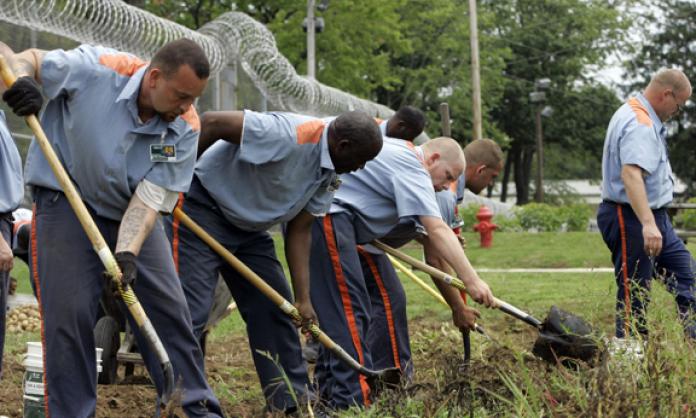Slavery may have been officially outlawed in the United States after the Civil War, but it has been moved from the plantations into the prisons. Coerced labour remains alive and well in the “land of the free”.
Almost 1 percent of the US adult population (2.2 million people) is in jail, and this rate is three times higher for African Americans, who are disproportionately targeted and arrested by police, less likely to be able to afford bond or a lawyer and more likely to be convicted and to receive longer sentences.
Most of the people in US prisons are jailed for nonviolent crimes.
It’s a system designed to break people, one that makes it hard for them to reintegrate into life outside jail and more likely to wind up back inside. This provides the US capitalist class a large pool of people with no rights and who can be used as slave labour.
Among the jailed population, almost a million inmates are forced to work. And they are not just making car licence plates. These days, state governments as well as companies as large as Victoria’s Secret and AT&T use prison forced labour to sew garments, staff call centres, build freeways and repair fences. This servitude is used to keep down the wages of the rest of the working class.
In terrible conditions, and at great risk to their own safety, inmates sometimes fight back. Prisoners across 24 states planned strike action on 9 September, announcing that they were refusing to participate in forced prison work programs. This isn’t the first prison strike in recent years in the United States – there have been strikes and hunger strikes in Georgia, California and Texas in the 2010s. But it is the most nationally coordinated.
The strikers’ demands included wages in line with those of free US citizens doing similar jobs, better mental health programs, better education and rehabilitation programs and privacy during medical appointments. The broader attitude of the prisoners is summarised in a statement from strike organisers: “The entire structure of courts and police, of control and slave-catching must shift to accommodate us as humans rather than slaves”.
Some of the prisoners were intimidated out of striking – one inmate in the south reported anonymously that, while they wanted to strike, the prison warden said that anyone not reporting to work would be charged with inciting a riot.
While prison lockdowns make it hard to get information, in other places the strike was more successful.
A significant minority of prisoners in North Carolina refused to work, and while they were outnumbered by prisoners not striking, they appear to have avoided serious repercussions.
In Chowchilla, California, just a few women refusing to work led the prison management to lock down the entire prison.
Most impressively, an anonymous report from Holman Prison in Alabama claimed that every single inmate respected the strike and slept or read as prison officers performed the work themselves.
This isn’t the end of the fight against 21st century slavery in the United States. It will take far more to smash the prison-industrial complex and end unpaid labour. But it’s a very important beginning.











